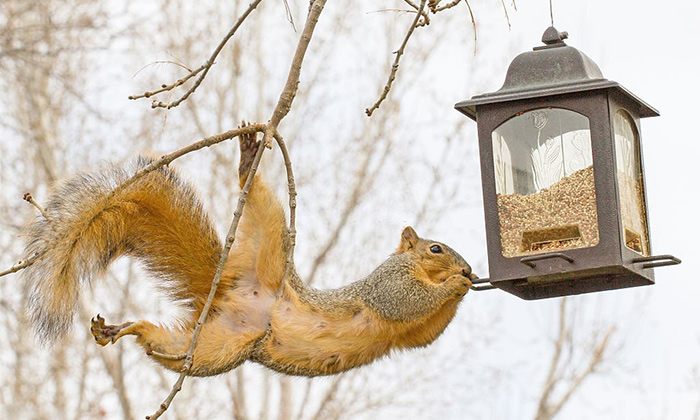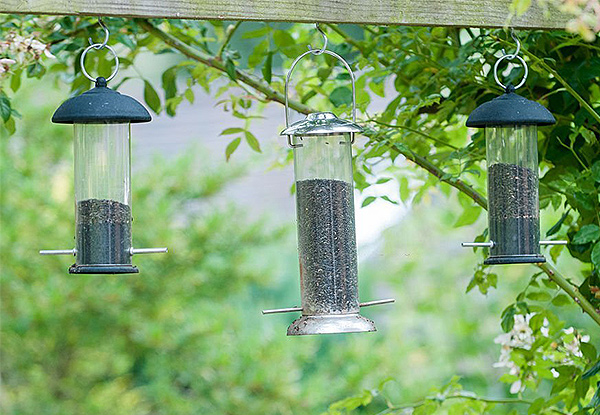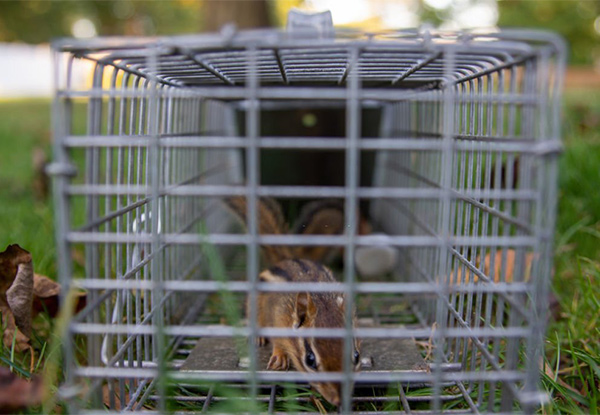If you have a bird feeder set up in your backyard, it is already understood that you just want to watch birds. However, if chipmunks found that they can partake of a smorgasbord of seeds and grains, they will chase away the birds from your feeder. With that, you should know how to keep chipmunks out of bird feeders.
This is so you can finally enjoy birdwatching again without having to deal with these rodents. This article will teach you a couple of methods that you can use to keep chipmunks out of your bird feeder, and without harming them in any way.
You will not be hurting the chipmunks since the methods here will only be persuading the rodents that it will not be worth the effort to even try getting food from your bird feeder.
Step-By-Step Guide
Contents
Maintain Cleanliness
Do chipmunks eat birdseed? Yes, they do. Chipmunks are foraging creatures and when they can find discarded seeds underneath the bird feeder, they will figure out where they came from.
To keep them from getting into your bird feeder, an effective way is to keep the area surrounding it clean.
What to prepare:
- Rake
- Shopvac
Detailed steps:
Step 1 – Pick up the discarded seeds
If there are lots of seed casings and discarded seeds underneath the feeder, you can use a rake to loosen them up. This will make the seeds go up to the top of the grass, making them easier to pick up. Pick as many loose seeds as you can by hand if you can.
Step 2 – Use the shop vac to suck up the rest
If many small seeds are scattered on the ground, use a shop vac to suck up the rest of the mess underneath the bird feeder. Without seeds to forage, chipmunks would not be able to figure out that there are more of them in the feeder.
Step 3 – Clean regularly
Clean underneath the bird feeder regularly. This will ensure that you do not provide the chipmunks with an opportunity to find any seeds at all. You should clean underneath the feeder at least once a week.
Elevate the Bird Feeder
Chipmunks are mostly ground feeders, so elevating the bird feeder keeps it out of their reach. Here’s how to stop chipmunks from climbing the bird feeder pole.
What to prepare:
- 5- or 6-foot metal pole
- Post hole digger
Detailed steps:
Step 1 – Dig a deep enough hole
Grab your post-hole digger and dig a hole that is 2 feet deep if you are using a 6-foot pole, and 1-1/2 feet if you are using a 5-foot pole. It might seem a bit deep but it is needed to keep the pole stable.
Step 2 – Install the feeder on top of the pole
Typically, most bird feeders have options for mounting on top of a pole. If it does not, you can use an S-hook on top of the pole and just hang the bird feeder on it. Make sure that you plug the top of the pole so that rainwater would not get into the tube.
Step 3 – Plant the pole into the ground
Carefully plant the other end of the metal pole into the hole you dug. You can use some rocks to keep the pole standing up straight while filling the hole around its base. Use a level to ensure that the pole is standing completely straight up. It will not be enjoyable looking at a crooked bird feeder pole.
Compact the ground around the base of the pole to secure it into the ground. The pole is rather smooth so chipmunks will not be able to climb it. It should be at just the right height so that you can refill the feeder easily.
Trap the Chipmunks
Chipmunks are mostly solitary, so the “chipmunks” that you see eating at your bird feeder are most likely just one animal. If this is so, you can use a humane chipmunk trap to capture it and relocate it somewhere far from your yard.
What to prepare:
- A humane small animal trap
- Some bird seed, for bait
Detailed steps:
Step 1 – Set up the trap
Position the trap underneath the bird feeder. If you can, camouflage the trap using a couple of branches. Set the trap and place a handful of birdseed inside to attract the rodent.
Step 2 – Leave the trap overnight
Once you set the trap, the only thing left for you to do is wait. Since chipmunks are typically diurnal, you may need to wait at least two days before the trap can catch anything. Check the trap every afternoon and place more bird seeds if other birds got to the bait first.
Step 3 – Relocate the chipmunk
Once the intruding chipmunk has been trapped, you can then relocate it. Grab the trap, making sure that you do not startle the chipmunk too much. You can do this by draping a large old towel over the trap to keep the chipmunk somewhat relaxed as you transport it.
Load the trap in your car and drive to the nearest patch of woodlands or the park. Bring the trap deep into the woods and release the chipmunk there. Hopefully, you’ve relocated the chipmunk far enough that it will not be able to come back to your property.
Make the Birdseed Unpalatable
Another way to keep chipmunks and other small critters is to make the birdseed unpalatable for them but not for the birds.
What to prepare:
- Cayenne pepper powder or dried chili flakes
- Birdseed
Detailed steps:
Step 1 – Mix the chili powder and birdseed
In a small mixing bowl, sprinkle about half a teaspoon of cayenne pepper on a cup of bird seed. Make sure that you coat all of the birdseed with cayenne.
Step 2 – Refill the feeder with the spicy birdseed
Once the birdseed is prepared, pour it into the bird feeder. Birds have evolved to make them quite resistant to the effects of capsaicin, the chemical that makes peppers spicy. However, rodents like chipmunks are quite susceptible to anything spicy so they will not eat the spicy birdseed.
Conclusion
Now that you know how to keep chipmunks out of bird feeders, you can enjoy watching the cute little birds anytime you want. In addition, since you did not do anything to harm the innocent chipmunks, you will not be burdened with guilt. The methods are quite simple, so you do not have any excuse to not try at least one of them.





